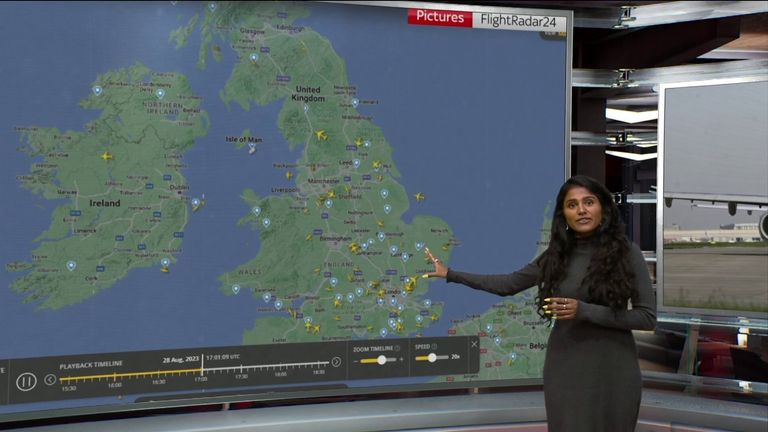An air traffic control boss has confirmed it was “unreliable” flight data that caused the technical failure behind disruption to thousands of flights this week.
Martin Rolfe, chief executive of National Air Traffic Services, said an initial investigation found the collapse of the system was caused by flight data which its system did not understand and “couldn’t interpret”.
However, avoiding a repeat scenario involves as much of a focus on the backup plan for when things go wrong as on the system itself.
Codes are key to air traffic
When pilots submit their flight plans to air traffic control, they do so in code.
A combination of letters and numbers tells operators about every key detail of their planned route – from the estimated time of arrival, to the flight level.
If a pilot inputs a figure incorrectly or enters an unusual plan, the system would normally reject it and it would have to be re-entered manually.
This happens regularly and is usually filtered out.
Subscribe to the Sky News Daily wherever you get your podcasts
Why the fault took time to find
Occasionally, an error in a flight plan can cause the entire planning system to go into a fault state, which means it cannot be used until the error is found and fixed.
Air traffic controllers then sift through thousands of flight plans to find the entry that tripped the system.
The last time this happened was a decade ago.
When this occurs, there is a backup system in place that stores data for an additional four hours to allow operators to find the fault.
The glitch occurred at 8.30am on Monday morning, but it took controllers around eight hours to identify the error, meaning the system was shut down completely for four hours.
Read more:
Why you’re not allowed off the plane if your flight is delayed
Am I entitled to compensation after air traffic control chaos?
Drive to modernise ageing tech
The planning system itself is a legacy technology from decades ago and a drive is under way to modernise it and for countries to cooperate to develop cross-border systems.
But if the backup system had greater capacity to store data and allow controllers longer to identify errors, the disruption on Monday could have been avoided.
Michelle Robson, a former air traffic controller and editor of the Turning Left for Less website, said: “It’s important to note the situation was not unsafe at any point.
“The reason there was huge disruption was because this process of going manual is there to ensure the controllers can control safely and they get the correct information in time for them to be able to do that.”

